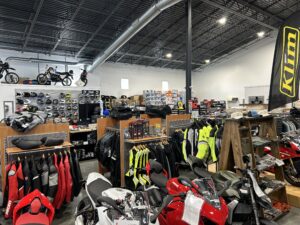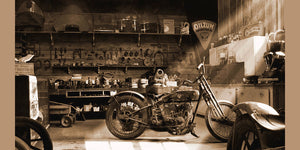An In-depth Look at Motorcycle Parts: What Every Rider Should Know
A comprehensive understanding of motorbike components is not merely beneficial however critical for any type of cyclist intending to make the most of performance and safety. Each element, from the engine's elaborate operations to the reliability of brake systems, plays a pivotal duty in the total experience and performance of the bike.
Understanding the Engine
The engine, typically considered the heart of a motorbike, is an intricate assembly of parts that operate in consistency to convert fuel into movement. At its core, the engine's key feature involves the combustion process, where air and fuel mix and stir up within the cylinders, resulting in regulated surges that drive the pistons. These pistons relocate up and down, converting chemical power into power, which consequently transforms the crankshaft, ultimately powering the bike.

Comprehending the complexities of a motorcycle engine is important for motorcyclists and lovers alike. It not only supplies understanding into just how motorbikes achieve their outstanding power and speed yet likewise help in efficient maintenance and troubleshooting, making sure longevity and integrity on the road.
Suspension Equipments
While the engine powers the bike, the shock absorber plays a crucial role in making certain a smooth and regulated ride. The shock absorber is accountable for soaking up shocks from the road surface area, keeping tire contact, and providing stability throughout cornering and braking. It consists of two major components: the front forks and the rear shock absorbers.
Front forks are normally telescopic, moistening and containing a spring device. The springtime compresses and expands to soak up bumps, while the wetting device manages the motion to avoid too much jumping. This combination makes certain the front wheel remains touching the road, providing premium handling and comfort.
The rear suspension, commonly a monoshock or twin-shock setup, functions likewise to the front suspension yet is tailored to support the motorbike's weight and rider - moto parts nz. It handles rear wheel motion, adding to the bike's overall equilibrium and responsiveness
Shock absorber can be flexible, permitting cyclists to tweak preload, compression, and rebound setups according to individual choices and riding problems. This adjustability boosts performance by maximizing the bike's communication with varied surfaces. In recap, an effective suspension system is important for motorcyclist convenience, security, and the motorcycle's dealing with prowess.
Brake Components
Quiting power is a fundamental facet of motorbike safety and security, and it hinges on the performance of the brake components. The main elements of a motorcycle's braking system consist of the brake pads, calipers, rotors, and master cyndrical tube. motocross gear. Each of these elements plays a vital role in guaranteeing efficient braking efficiency
Brake pads are necessary as they create the necessary rubbing versus the rotors to decrease or quit the motorcycle. Created from products such as sintered steel or natural composites, the option of brake pad material dramatically affects performance and durability. Calipers, housing the brake pads, use stress to the pads when the brake lever is involved, promoting call with the rotors.
The blades, normally made from stainless steel or cast iron, his explanation are installed to the wheels and work as the surface versus which the brake pads press. go to my blog Their style, including size and thickness, impacts warm dissipation and stopping power. The master cyndrical tube, linked to the brake bar, creates hydraulic stress sent via brake lines to the calipers, making sure consistent stopping pressure.
Regular upkeep and assessment of these elements are important for optimum performance, protecting against wear and guaranteeing biker safety when traveling.
Tire Essentials
Beyond keeping durable stopping systems, making certain optimum tire efficiency is equally significant for bike safety and security and performance. Tires are the single contact factor in between the road and the motorcycle, making their problem essential in dealing with, security, and overall trip top quality.

Additionally, take into consideration the tire's age. Rubber compounds break down with time, even if step appears sufficient. Examine the sidewall for the DOT (Division of Transport) code to determine the tire's age. Commonly, replacement is recommended every 5 years, despite wear. Investing attention in these tire essentials not read this post here only enhances performance but additionally considerably boosts riding safety and security.
Electric Systems
In the realm of motorcycle maintenance, the electrical system plays an essential duty in ensuring dependable performance and biker security. This intricate network includes vital elements such as the battery, generator, starter motor, and electrical wiring harness. Each component is important for the seamless operation of the bike, from ignition to lights and interaction with numerous sensors.
The battery acts as the heart of the electric system, giving the essential power to begin the engine and run devices. Routinely inspecting the battery's voltage and terminals for rust is important to protect against unexpected failures. The generator, on the various other hand, charges the battery while the engine is running, ensuring a continuous power supply.
To maintain it, motorcyclists must pay attention to any type of uncommon noises or troubles during startup. Guaranteeing that the cords are cost-free and intact from damages is vital for preventing short circuits and making certain performance.
Verdict

Stopping power is a basic facet of bike security, and it pivots on the effectiveness of the brake parts. The primary aspects of a motorbike's stopping system consist of the brake pads, calipers, blades, and master cyndrical tube.Brake pads are crucial as they produce the required rubbing against the rotors to reduce down or quit the motorcycle.Beyond keeping robust stopping systems, making certain optimum tire performance is just as considerable for motorcycle safety and security and effectiveness.In the realm of bike maintenance, the electric system plays a critical function in making certain trusted efficiency and biker safety and security.